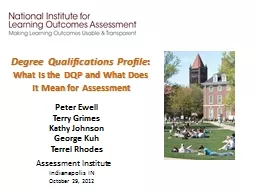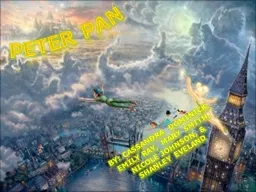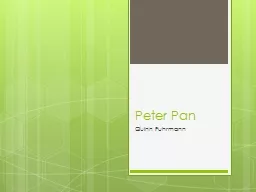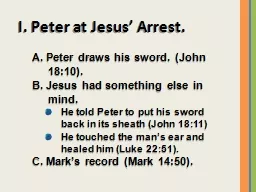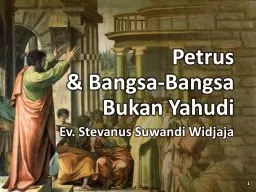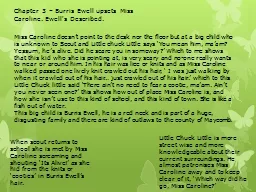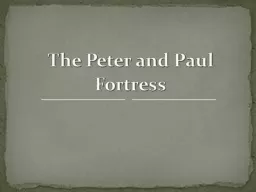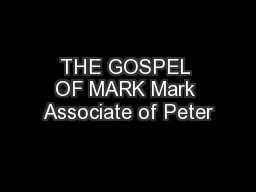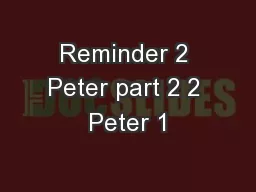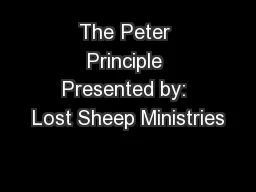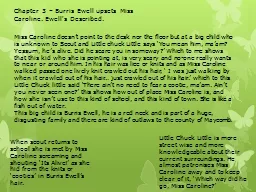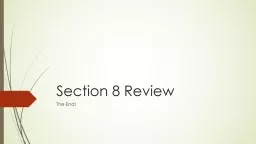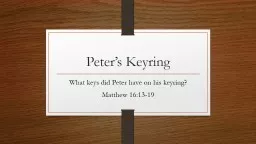PPT-Peter Ewell
Author : danika-pritchard | Published Date : 2017-04-08
Terry Grimes Kathy Johnson George Kuh Terrel Rhodes Assessment Institute Indianapolis IN October 29 2012 Degree Qualifications Profile What Is the DQP and What
Presentation Embed Code
Download Presentation
Download Presentation The PPT/PDF document "Peter Ewell" is the property of its rightful owner. Permission is granted to download and print the materials on this website for personal, non-commercial use only, and to display it on your personal computer provided you do not modify the materials and that you retain all copyright notices contained in the materials. By downloading content from our website, you accept the terms of this agreement.
Peter Ewell: Transcript
Download Rules Of Document
"Peter Ewell"The content belongs to its owner. You may download and print it for personal use, without modification, and keep all copyright notices. By downloading, you agree to these terms.
Related Documents

